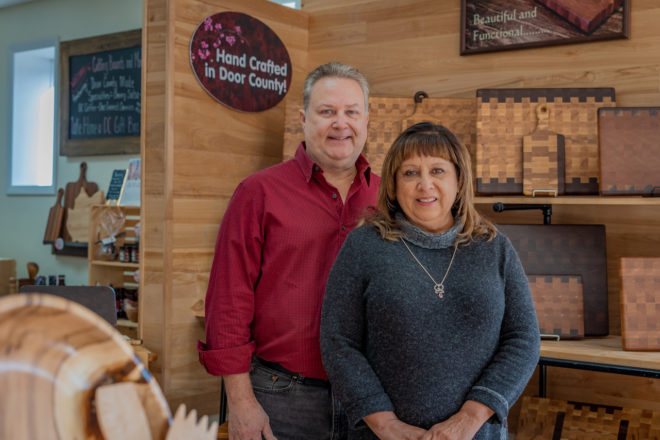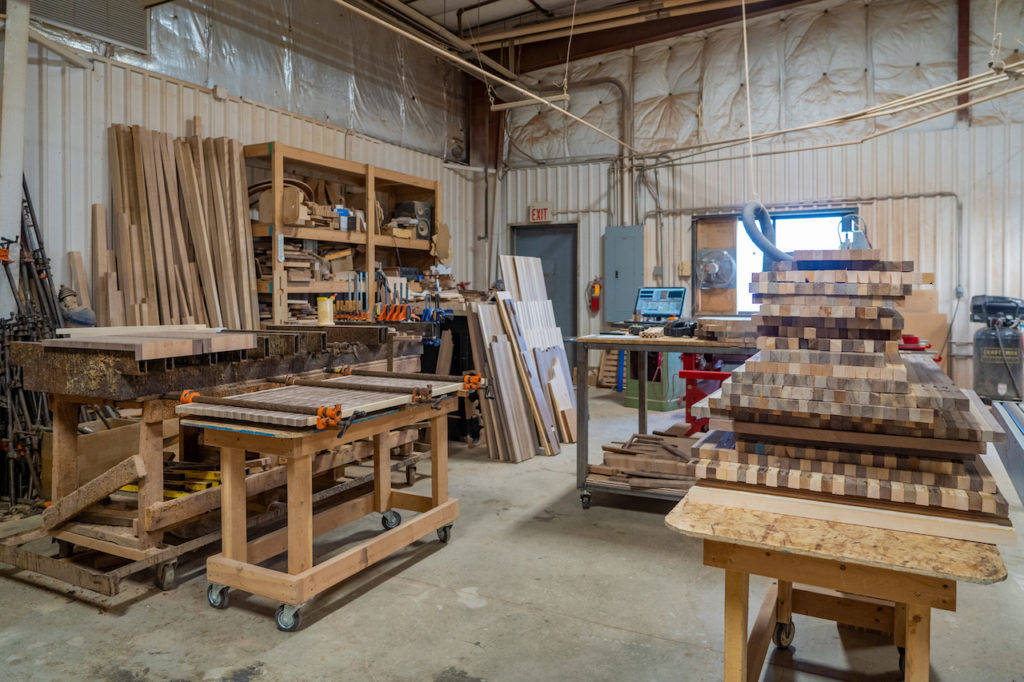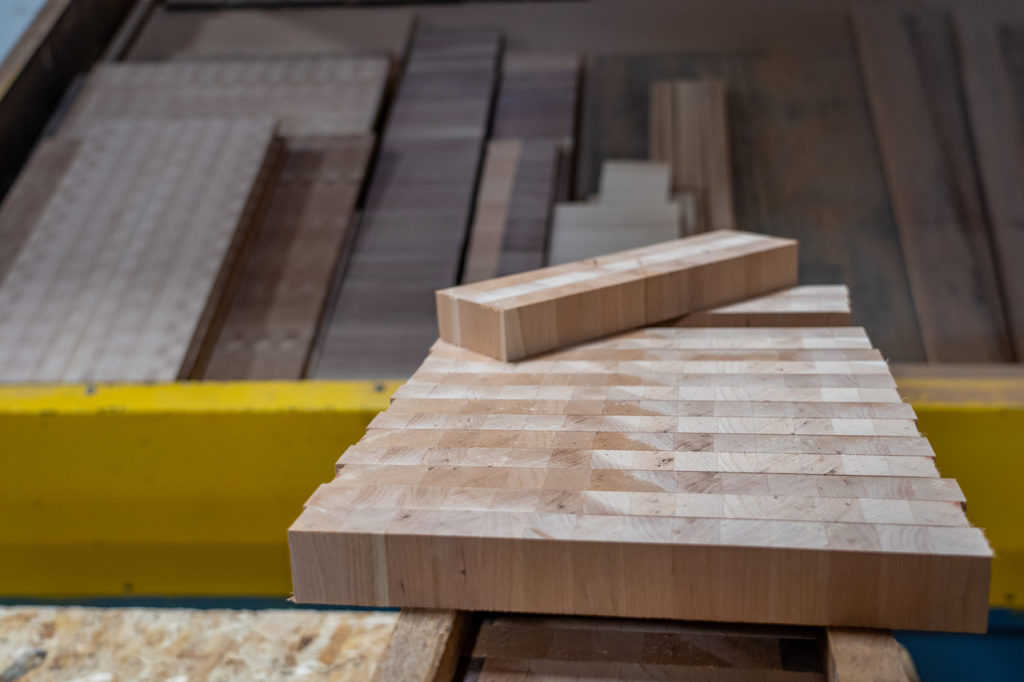The Functional Art of Richard Rose Culinary
- Share
- Tweet
- Pin
- Share

Manufacturing Month: Made In Door County
There are 65 manufacturers up and down Door County making everything from machine parts to candles, ships to coffee. They may be a top employer or a small shop with a big reach. One of the latter is Richard Rose Culinary. It’s a woodworking shop located in the Door County Economic Development Corporation’s (DCEDC) Business Development Center, a small business incubator located in the Sturgeon Bay Industrial Park.
The company makes handcrafted, wooden kitchen products including end grain cutting boards, considered some of the finest boards on the market today. Richard Rose Culinary’s solid cherry or walnut end grain boards have been used by celebrity chefs on more than 14 Food Network and Cooking Channel cooking shows.
Each piece is individually designed, cut, sanded and oiled right here in Door County, then sold online at richardroseculinary.com or through the retail arm of the business: Cutting Boards and More at 368 Jefferson St. in Sturgeon Bay.
The couple behind the manufacturing/retail combination is Richard “Rick” Odea and Rose Miranda.
Rick and Rose moved themselves and their business to Door County in 2017 from their home in Tucson, Arizona. They visited Door County during a trip to Rick’s native Green Bay – Rose was born and raised in Tucson – and the rest is history.

“I fell in love,” Rose said, “and we were looking for a retail location. Door County seemed perfect.”
Before shifting to the woodworking trade that had been his father’s and his grandfather’s before him, Rick spent a couple of decades in the music industry as a Steinway piano dealer. His cutting boards are the Steinways of the cutting-board world: works of “functional art,” as he calls them. Beautiful and substantial, they’re like a countertop centerpiece that can be used not only for cutting, but also for serving or as a charcuterie platter.
To talk with Rick and Rose is to learn that all cutting boards are definitely not alike. A typical one is made with the edge grain of the wood – the side of the board where woodworkers measure the thickness of the board. The best cutting boards are made with the end of the wood board, which tends to be the strongest side of the wood, yet the gentlest on the knife.
“That’s the best surface to cut on,” Rick said. “It’s our flagship and the best. We make a lot of other cutting boards, but that one is what we are known for.”
Rick sources most of his wood from Algoma Hardwoods, though he has on occasion picked up a local walnut or cherry tree. He also crafts some products using hard maple and more and more ash.
“I’ve never used as much ash, but now it’s so available,” he said. “We do a little bit in red oak. It’s a little more porous, but makes a good cutting-board surface.”
The “and more” side of their Cutting Boards and More retail store is a wonderland of handcrafted, wooden products from bowls to pizza paddles to charcuterie boards to utensils. One unusual product is a stove-top cover, primarily for gas ranges. The store also carries the work of a potter, a carver, two bowl turners and two photographers, as well as some locally made foods and cards.
Rick’s wood products are all made in his shop in the industrial park.
“It’s a good place to be,” he said. “We’ve met a lot of people through that building.”

Inside the Richard Rose Culinary shop in the Sturgeon Bay Business Development Center at the Industrial Park. Photo by Rachel Lukas. 

It takes about a week to make an end grain cutting board at the Richard Rose Culinary shop in Sturgeon Bay. Photos by Rachel Lukas.
They’ve also benefited from the services that the DCEDC business-incubator tenants receive. When they first moved their business to Door County, they relied heavily on restaurant-industry customers. Their DCEDC adviser at the time suggested they diversify. They agreed, putting together a business plan and buying equipment to increase production. Then the pandemic hit, forcing the diversification perhaps a lot sooner than they’d planned.
“We lost 70% of our business,” Rick said. “COVID stopped everything. But we pivoted, and the store did great; the internet did great. And then last year – wow. I couldn’t make things fast enough.”
Rick has hired a full-time employee – a local person with a lot of talent, he said. Eventually, he’d like to bring in youth apprentices to teach them the trade. His goals and challenges are the same as any other manufacturer, he said, though smaller companies often get bypassed.
“There’s a lot of things I deal with that the big guys are dealing with, just on a smaller basis,” he said.
Those things include profitability, increasing production and streamlining the manufacturing process to achieve maximum efficiency and flow within his 2,800-square-foot shop.
“It’s a challenge,” he said. “For the entrepreneur in you, it’s the challenge of getting better; it’s taking on the manufacturing challenge.”


